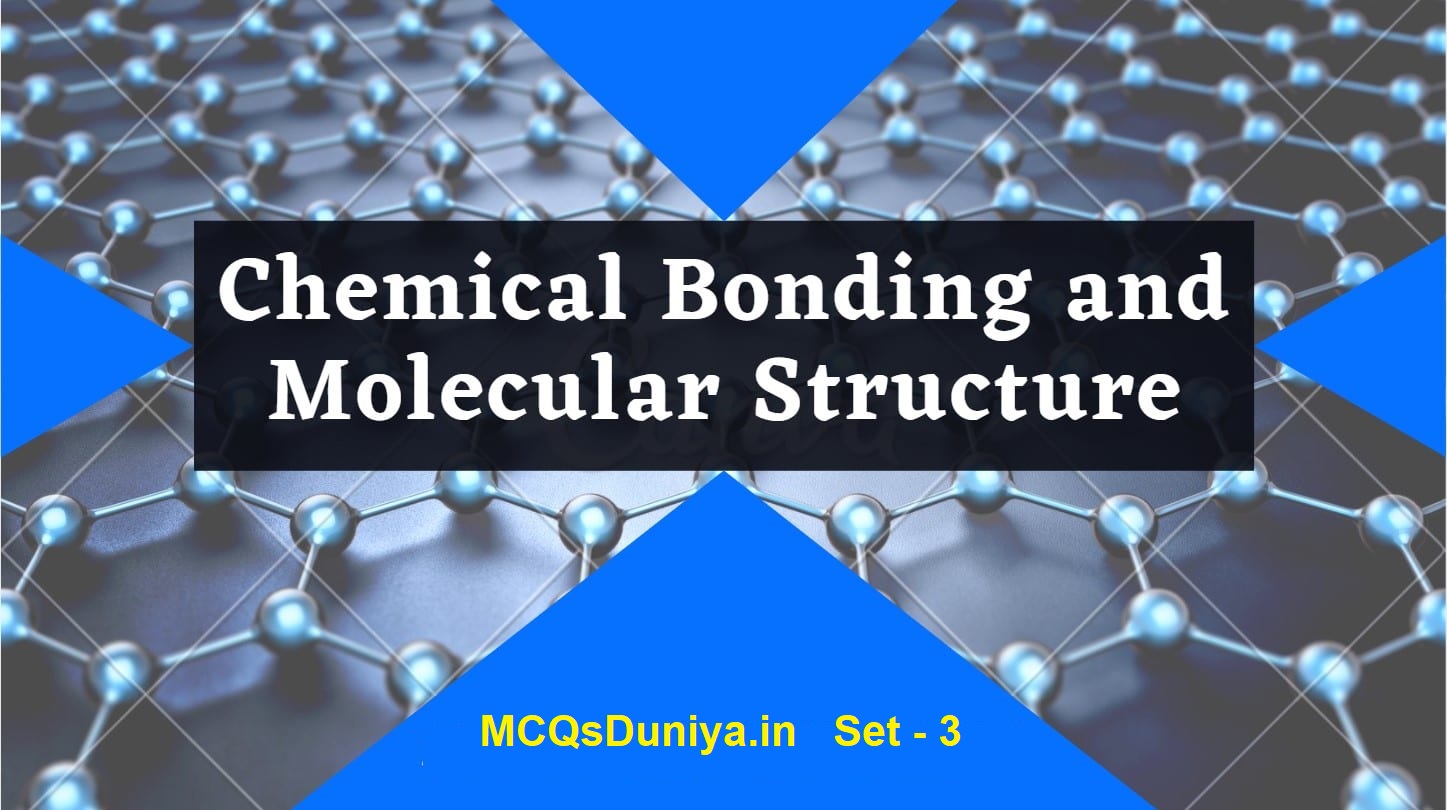CBSE Class 11 Chemistry Chapter 4 Chemical Bonding and Molecular Structure Multiple Choice Questions with Answers. MCQ Questions Class 11 Chemistry Chemical Bonding and Molecular Structure with Answers was Prepared Based on Latest Exam Pattern. Students can solve NCERT Class 11 Chemistry Chemical Bonding and Molecular Structure MCQs with Answers to know their preparation level.
Students who are searching for NCERT MCQ Questions for Class 11 Chemistry Chemical Bonding and Molecular Structure with Answers are compiled here to get good practice on all fundamentals. Know your preparation level on MCQ Questions for Class 11 Chemistry with Answers. You can also verify your answers from our provided MCQ Class 11 Chemistry Chemical Bonding and Molecular Structure with Answers. So, ace up your preparation with MCQ of Chapter 4 Chemistry Objective Questions.
MCQ Questions Class 11 Chemistry Chemical Bonding and Molecular Structure with Answers - Set - 3
Question 1:
Among KO2, AlO2−, BaO2 and NO2+ unpaired electron is present in
(a) NO2+ and BaO2
(b) KO2 and AIO2−
(c) KG2 only
(d) BaO2 only
Correct Answer – (C)
Question 2 :
The correct order of hybridisation of the central atom in the following species: NH3, [PtCl4]2-, PCl5 and BCl3 is
(a) dsp², dsp³, sp² and sp³
(b) sp³, dsp², dsp³, sp²
(c) dsp², sp², sp³, dsp³
(d) dsp², sp³, sp², dsp³.
Correct Answer – (B)
Question 3 :
Which of the following are iso-structural?
(a) XeF2, IF-2
(b) NH3, BF3
(c) CO2−3, SO2−3
(d) PCl5, ICl5
Correct Answer – (A)
Question 4 :
Which of the following pairs of molecules will have permanent dipole moment for both members?
(a) NO2 and CO2
(b) NO2 and O3
(c) SiF4 and CO2
(d) SiF4 and NO2
Correct Answer – (B)
Question 5 :
Which among the following has the largest dipole moment?
(a) NH3
(b) H2O
(c) HI
(d) SO3
Correct Answer – (B)
MCQ Questions Class 11 Chemistry Chemical Bonding and Molecular Structure with Answers
Question 6 :
Amongst H2O, H2S, H2Se and H2Te the one with the highest boiling point is
(a) H2O because of hydrogen bonding
(b) H2Te because of higher molecular weight
(c) H2S because of hydrogen bonding
(d) H2Se because of lower molecular weight.
Correct Answer – (A)
Question 7 :
Which of the following are isoelectronic and iso-structural NO−3, CO2−3, CIO−3, SO3
(a) NO−3,CO2−3
(b) SO3, NO−3
(c) CIO−3, CO2−3
(d) None of them
Correct Answer – (A)
Question 8 :
Which one of the following does not contain coordinate bond?
(a) BH−4
(b) NH−4
(c) CO2−3
(d) H3O+
Correct Answer – (C)
Question 9 :
Maximum bond angle is present in case of
(a) BBr3
(b) BCl3
(c) BF3
(d) Same in all
Correct Answer – (D)
Question 10 :
Which one of the following molecules will form a linear polymeric structure due to hydrogen bonding?
(a) HCl
(b) HF
(c) H2O
(d) NH3
Correct Answer – (D)
- NCERT Solutions Class 11 Chemistry Chapter 1 : Some Basic Concepts of Chemistry
- NCERT Solutions Class 11 Chemistry Chapter 2 : Structure Of The Atom
- NCERT Solutions Class 11 Chemistry Chapter 3 : Classification of Elements and Periodicity in Properties
- NCERT Solutions Class 11 Chemistry Chapter 4 : Chemical Bonding and Molecular Structure
- NCERT Solutions Class 11 Chemistry Chapter 5 : States of Matter
- NCERT Solutions Class 11 Chemistry Chapter 6 : Thermodynamics
- NCERT Solutions Class 11 Chemistry Chapter 7 : Equilibrium
- NCERT Solutions Class 11 Chemistry Chapter 8 : Redox Reactions
- NCERT Solutions Class 11 Chemistry Chapter 9 : Hydrogen
- NCERT Solutions Class 11 Chemistry Chapter 10 : The s-Block Elements
- NCERT Solutions Class 11 Chemistry Chapter 11 : The p-Block Elements
- NCERT Solutions Class 11 Chemistry Chapter 12 : Organic Chemistry: Some Basic Principles and Techniques
- NCERT Solutions Class 11 Chemistry Chapter 13 : Hydrocarbons
- NCERT Solutions Class 11 Chemistry Chapter 14 : Environmental Chemistry




